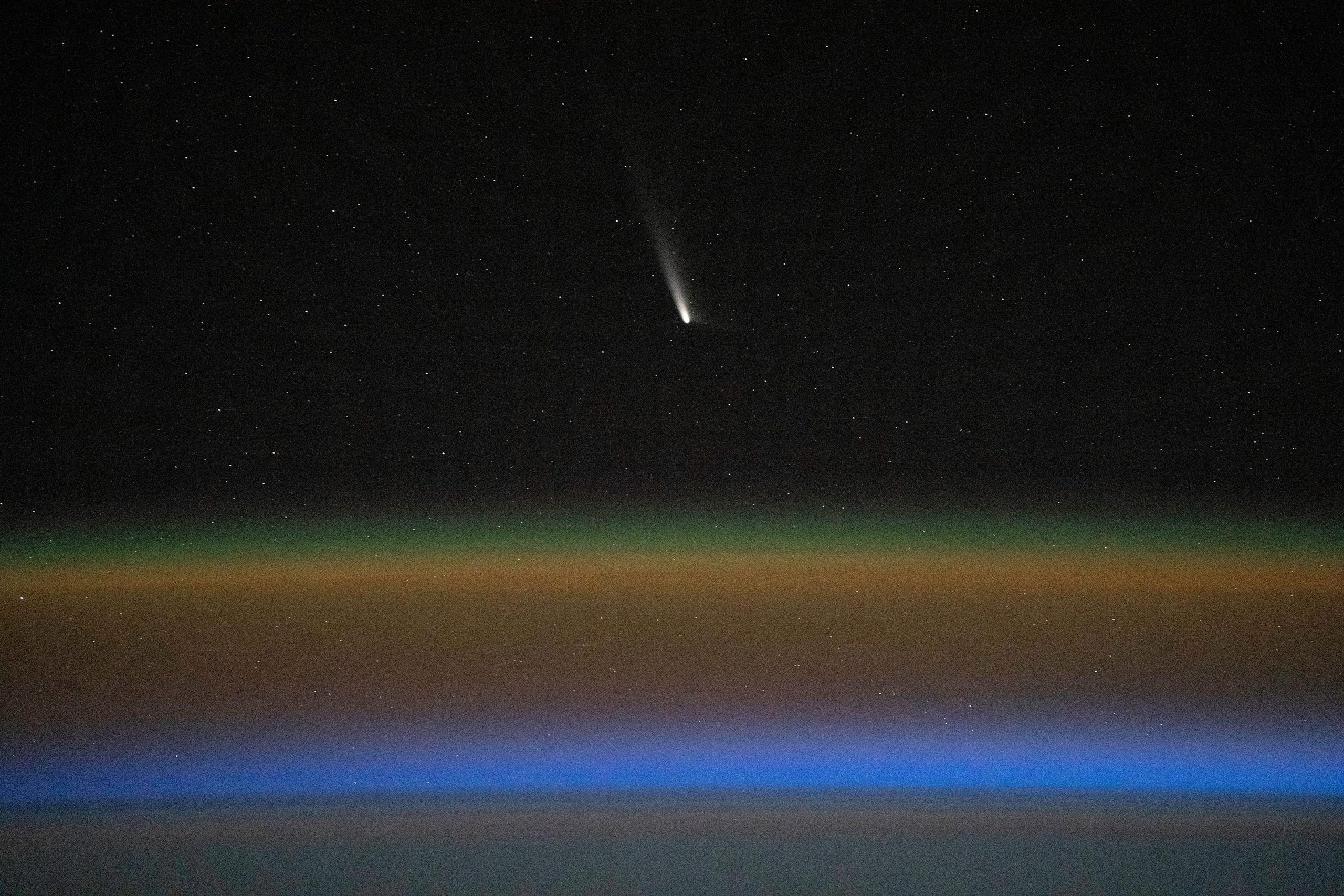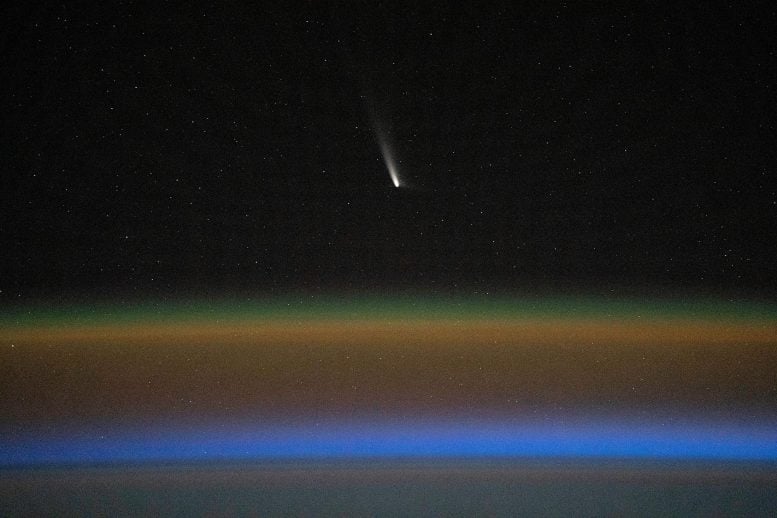

In a remarkable cosmic event captured by the Solar and Heliospheric Observatory, Comet C/2023 A3 (Tsuchinshan–ATLAS), the second brightest comet observed by SOHO, showcased its bright nucleus and large dust tail.
Amidst intense solar activity, the comet displayed a unique ‘anti-tail’ effect while moving away from the sun, becoming fainter in the western sky.
Cosmic Spectacle: Comet C/2023 A3’s Journey Observed
From October 7 to October 13, 2024, ESA/NASA’s Solar and Heliospheric Observatory (SOHO) spacecraft captured stunning footage of Comet C/2023 A3 (Tsuchinshan–ATLAS), the second brightest comet ever observed by SOHO. During the same period, the Sun was ejecting large amounts of material, visible at the center of the frame, while the planet Mercury appeared to the left.
The comet’s bright nucleus is surrounded by a dusty coma and trails a long, curved tail. SOHO’s vantage point allowed it to see the dust tail edge-on as it curved, shaped by the force of the solar wind.
Credit: Simeon Schmauß & SOHO (ESA & NASA)
Unveiling Celestial Phenomena: Anti-Tail and Cometary Origins
Near the end of the video, a rare phenomenon called an ‘anti-tail’ is visible—a long, thin line pointing toward the Sun. This optical illusion occurs when SOHO views the larger dust particles in the comet’s orbital plane from an edge-on perspective.
Comet C/2023 A3 was seen for the first time early last year. It most likely came from the distant Oort cloud.
Observational Achievements and Visibility Details
The comet reached an estimated peak brightness just beyond –4 magnitude. (The more negative the visual magnitude value, the brighter the object.) Of the more than 5000 comets SOHO has seen flying past the Sun, only Comet C/2006 P1 (McNaught) was brighter, with a visual magnitude of –5.5.
SOHO’s location between the Sun and Earth gave it a front-row seat, but the same comet has been visible from Earth every evening since 12 October 2024. Throughout October, as the comet moves farther away from the Sun, it will gradually grow fainter and rise higher up in the western sky.
A Week of Intense Solar Activity
The week that SOHO watched Comet Tsuchinshan–ATLAS was also a wild one in terms of space weather. The Sun unleashed no less than 4 X-class flares (the highest intensity type of flare), 28 medium-intensity M-class flares, and 31 coronal mass ejections – the latter being visible as white clouds of material in the video. All this activity led to two geomagnetic storms on Earth, resulting in beautiful auroras lighting up the night sky.
SOHO, short for Solar and Heliospheric Observatory, is a joint ESA-NASA mission to study the Sun. For almost 29 years now, it has been watching the Sun itself as well as the much fainter light coming from the Sun’s outer atmosphere, called the solar corona. The data shown in this video were taken by the LASCO C3 coronagraph instrument.
Special thanks to Simeon Schmauß, who processed the raw data to create this impressive video. For comparison, here is a video of the comet with more standard data processing – the comet is so bright that it partially saturated SOHO’s sensor.